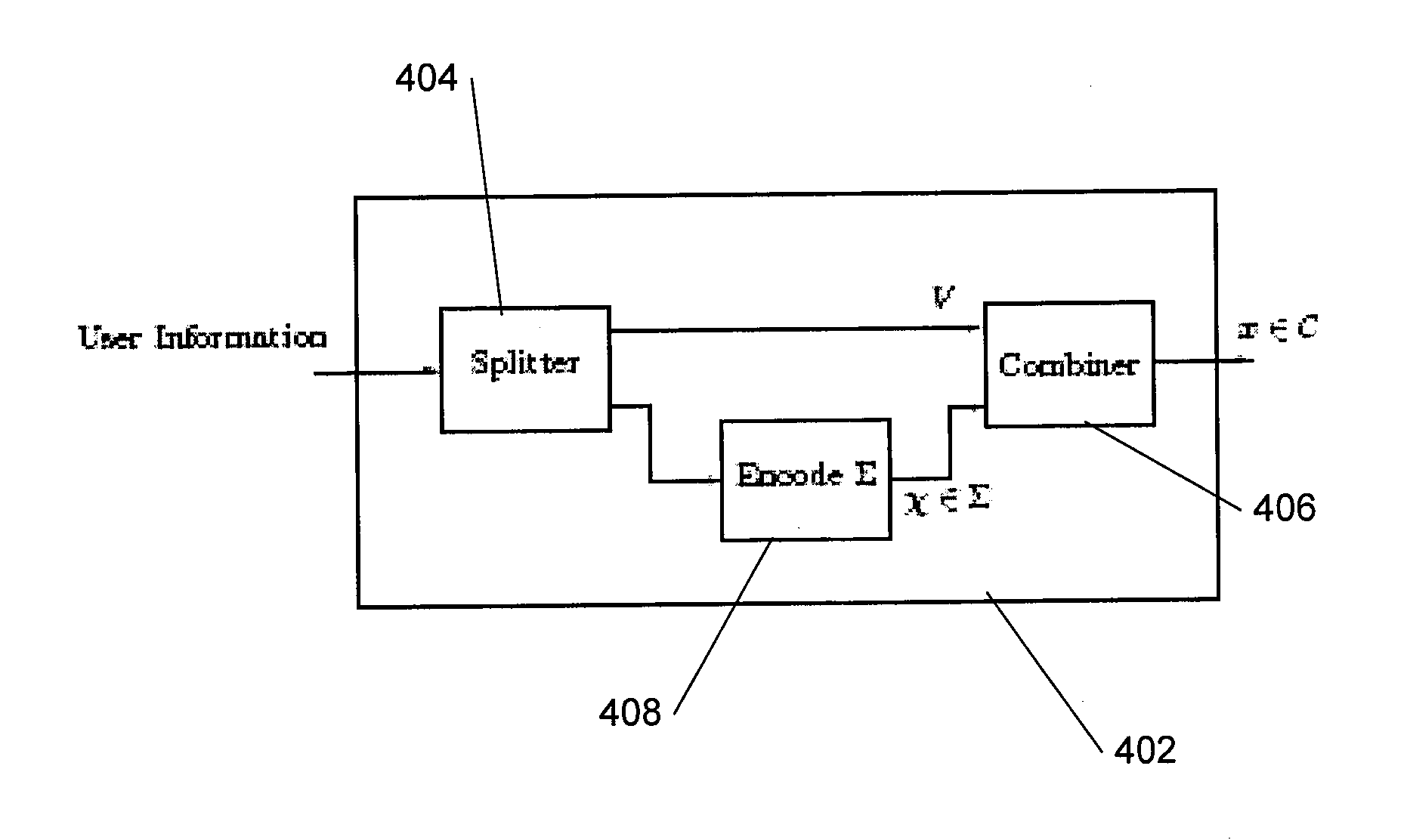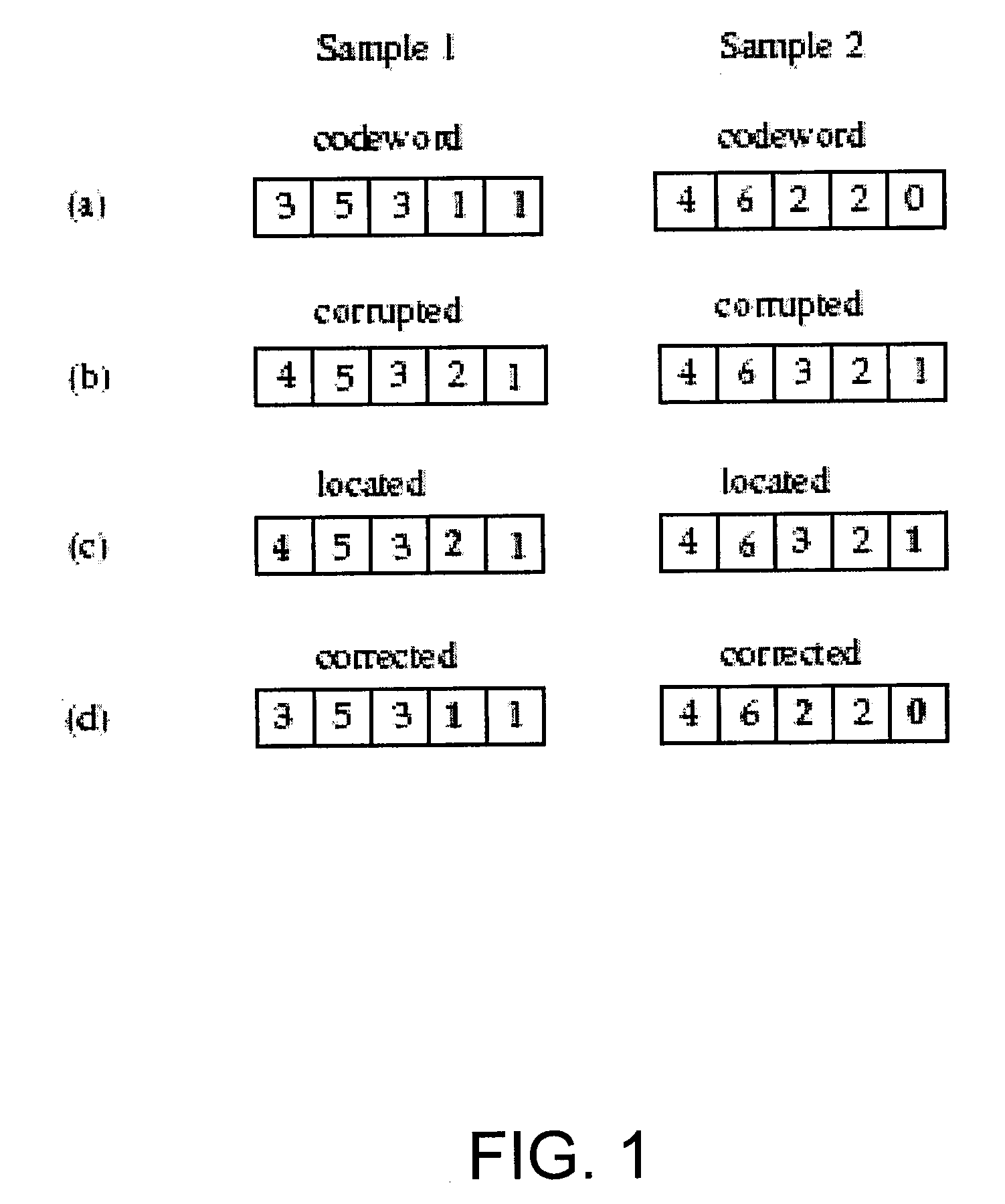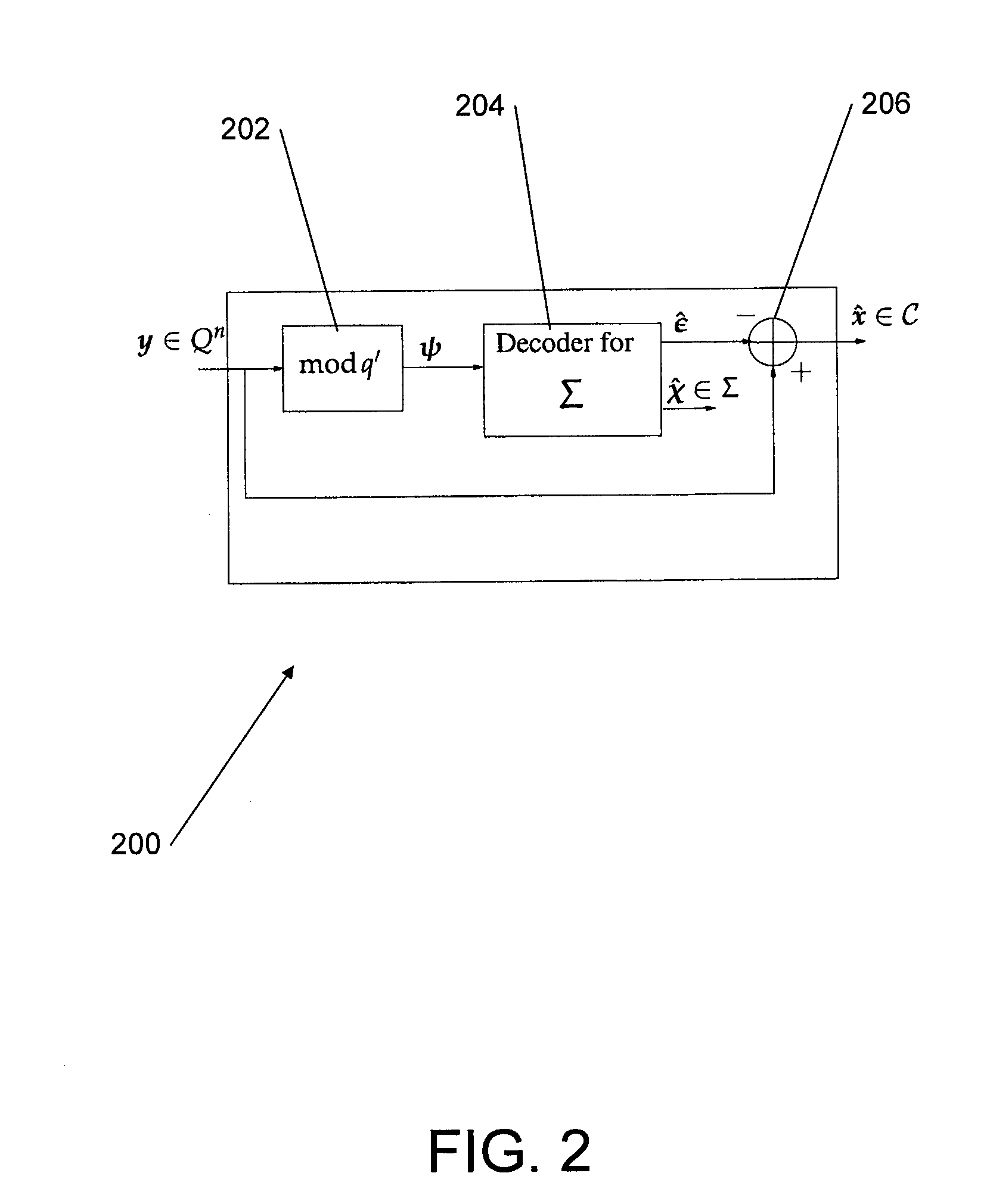Codes For Limited Magnitude Asymetric Errors In Flash Memories
a flash memory and asymetric error technology, applied in the field of memory devices, can solve the problems of limiting the reliability and performance of multi-level flash memory, affecting the accuracy of flash memory, and significant error sources to change cell levels, etc., and achieves the effect of accelerating, achieving target data levels more quickly, and aggressive memory programming operations
- Summary
- Abstract
- Description
- Claims
- Application Information
AI Technical Summary
Benefits of technology
Problems solved by technology
Method used
Image
Examples
example 10
[0088]Let ΣH be the binary Hamming code of length n=2m−1, for some integer m. (Non-binary Hamming codes can be used as well when l>1.) First we define the code CH in the way of Section II.
CHx={x=(x1, x2, . . . , xn)∈Qn:x mod 2∈ΣH}.
[0089]By the properties of ΣH, the code CH corrects a single asymmetric l=1 limited-magnitude error. When the code alphabet size is q=2b, for some integer b, the perfect code CH, whose size equals |CH|=2(b−1)n·2n−m=2nb−m by Equation (2), admits a simple function from nb−m information bits to codewords of CH over Q. A possible encoding procedure for CH is illustrated in FIG. 3. In FIG. 3(a), nb−m information bits are input to the encoder. The encoder then uses a binary Hamming encoder to encode n−m of the information bits into a length n Hamming codeword (FIG. 3 (b)). Finally, in FIG. 3 (c), each q-ary symbol of the codeword x∈CH is constructed from b bits using the usual binary-to-integer conversion, the top row being the least-significant bits of xi∈Q. De...
example 11
[0103]In this example we propose a systematic variant to the code CH, given in Example 10. The encoding function given below generates a code that has the same correction capabilities as CH, namely any single l=1 asymmetric error is correctable, though the resulting code is different. Specifically, the dimensions of the systematic code are different. For this example we assume that the alphabet size of the code is 2m (m: the number of parity bits in the binary code), compared to 2b for arbitrary b in CH. This assumption can be lifted with a small increase in redundancy that depends on the actual code parameters. For an [n, k=n−m] binary Hamming code ΣH, the length of the systematic code is n−m+1, compared to n in the non-systematic case. The encoding procedure for a systematic code is illustrated in FIG. 6 comprising FIGS. 6(a), 6(b), 6(c). In FIG. 6(a), km information bits are input to the encoder. The encoder then uses a binary Hamming encoder to encode the k information bits of t...
PUM
 Login to View More
Login to View More Abstract
Description
Claims
Application Information
 Login to View More
Login to View More - R&D
- Intellectual Property
- Life Sciences
- Materials
- Tech Scout
- Unparalleled Data Quality
- Higher Quality Content
- 60% Fewer Hallucinations
Browse by: Latest US Patents, China's latest patents, Technical Efficacy Thesaurus, Application Domain, Technology Topic, Popular Technical Reports.
© 2025 PatSnap. All rights reserved.Legal|Privacy policy|Modern Slavery Act Transparency Statement|Sitemap|About US| Contact US: help@patsnap.com



